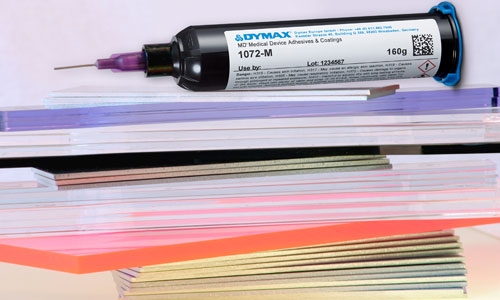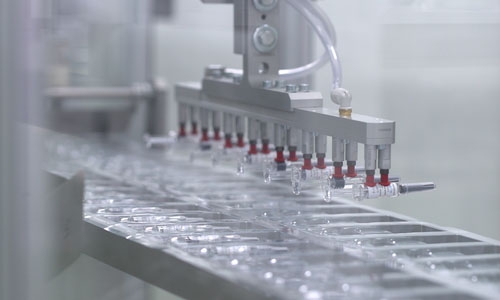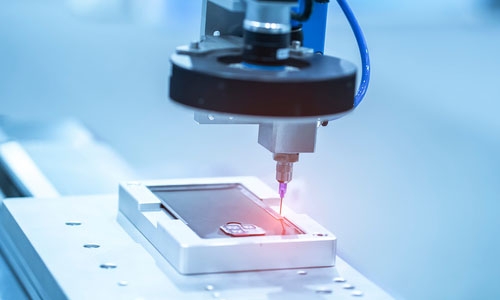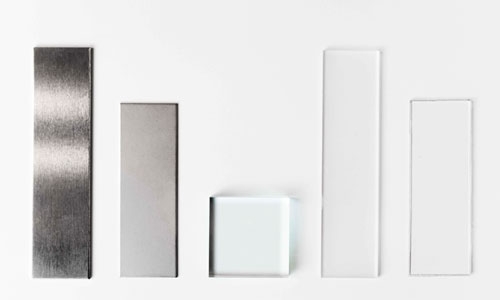Understand the Differences and Applications of Various Adhesive Technologies
When selecting the best adhesive for your application, light-curable adhesives often stand out for their fast cure times, versatility, and environmental friendliness. However, each type of adhesive—whether epoxies, urethanes, silicones, hot melts, solvent-based adhesives, or cyanoacrylates—has unique properties that may make it a better choice depending on your specific requirements. Here’s a comprehensive comparison to help you choose the best product for your project.
Light-Curable Adhesives vs. One-Part Epoxies
Curing Speed: Light-curable adhesives cure in 1-30 seconds, while one-part epoxies require 5-60 minutes in a heat-curing oven.
Shelf Life and Storage: Light-curable adhesives generally offer a longer shelf life and room temperature storage, unlike epoxies, which may need refrigeration and have a shorter shelf life.
Bonding Opaque Substrates: Epoxies cure regardless of light exposure, making them ideal for opaque substrates.
Chemical Resistance: Epoxies are preferred in chemically harsh environments, while light-curable adhesives suit moderate chemical resistance needs.
Which to Choose: Light-curable adhesives for speed, ease, and longer shelf life; one-part epoxies for opaque materials and extreme chemical exposure.
Light-Curable Adhesives vs. Two-Part Epoxies
Curing and Ease of Dispense: Light-curable adhesives provide quick curing without mixing, unlike two-part epoxies that require mixing and can take up to several hours to cure.
Purge Cycles: Two-part epoxies require purge cycles that generate hazardous waste, whereas light-curable adhesives do not, making them more environmentally friendly.
Bonding Dissimilar Substrates: Light-curable adhesives bond a variety of substrates, while epoxies are generally better suited for chemically resistant applications.
Pot Life: Light-curable adhesives are one component and remain stable until light exposure, so they have no pot life, whereas two-part epoxies could have a pot life between 30-60 minutes.
Which to Choose: Light-curable adhesives for quick, clean application and minimal waste; two-part epoxies for chemical resistance and strength.
Light-Curable Adhesives vs. Cyanoacrylates
Curing Speed: Light-curable adhesives fully cure in seconds with UV light, while cyanoacrylates require only fixture hold within 10-60 seconds.
Impact Resistance: Light-curable adhesives offer options from flexible to rigid, while cyanoacrylates are generally brittle after curing.
Temperature and Moisture Resistance: Light-curable adhesives withstand greater temperature extremes and offer better moisture resistance.
Which to Choose: Light-curable adhesives for versatility and durability; cyanoacrylates for quick, no-equipment-required applications.
Light-Curable Adhesives vs. One-Part Silicones
Temperature Resistance: Silicones withstand higher temperatures, while light-curable adhesives are better for fast-paced applications needing instant handling.
Bonding Opaque Substrates: Silicones bond well with opaque substrates without light, unlike light-curable adhesives.
Worker and Environmental Safety: Light-curable adhesives do not contain isocyanates and generate minimal hazardous waste.
Which to Choose: Light-curable adhesives for rapid cure, environmental safety, and ease; silicones for high temperatures and bonding opaque substrates.
High-speed automated assembly lines are ideal for fast-curing LCMs.
Light-Curable Adhesives vs. Two-Part Urethanes
Ease of Dispense and Hazardous Waste: Light-curable adhesives require no mixing and are isocyanate-free, whereas two-part urethanes need mixing and produce hazardous waste.
Bonding Opaque Substrates: Urethanes bond opaque substrates effectively without light exposure.
Material Cost: Urethanes have a lower cost per pound, but light-curable adhesives are ideal for quick and clean application.
Pot Life: Light-curable adhesives are one component and remain stable until light exposure, so they have no pot life, whereas two-part urethanes could have a pot life between 30-60 minutes.
Which to Choose: Light-curable adhesives for ease and environmentally friendly bonding; two-part urethanes for budget-sensitive, durable applications.
One-component materials are easily dispensed for fast processing.
Light-Curable Adhesives vs. Hot Melts
Temperature and Bond Durability: Light-curable adhesives perform well across various temperatures, while hot melts weaken at high and low temperatures.
Clarity and Bond Precision: Light-curable adhesives offer optically clear options and are available in various viscosities, unlike hot melts, which can be stringy and opaque.
Bonding Opaque Substrates: Hot melts do not rely on light curing, making them effective for opaque substrates.
Which to Choose: Light-curable adhesives for versatile, strong, and clear bonds; hot melts for opaque materials and lower-cost applications.
Lichthärtbare Klebstoffe im Vergleich zu Lösungsmittelklebstoffe
Worker Safety and Flammability: Light-curable adhesives are non-flammable with low odor, whereas solvent-based adhesives can be highly flammable and require ventilation.
Bond Flexibility and Gap-Filling: Light-curable adhesives accommodate large gaps and bond dissimilar substrates, while solvent-based adhesives are less effective for these applications.
Which to Choose: Light-curable adhesives for safety, environmental compliance, and gap-filling; solvent-based adhesives for cost-effective, quick bonds on opaque substrates.
Light-curable adhesives are suitable for bonding dissimilar substrates.
Final Thoughts: Which Chemistry is Best?
Choosing the most suitable adhesive depends on your project’s unique demands.
Light-curable adhesives are best for projects needing fast cure times, high clarity, temperature stability, gap-filling, and environmentally friendly handling. They're ideal in high-throughput, precision-required settings.
Alternative chemistries provide benefits that light-curable adhesives may not offer.
Epoxies and urethanes are ideal for chemically resistant, cost-sensitive, or high-temperature applications, especially with opaque substrates, and cyanoacrylates are useful for quick bonds without specialized equipment. For projects that require high-temperature stability or bonding opaque and non-heat-sensitive materials, silicones and hot melts are the better solution. Solvent-based adhesives are suitable for fast, affordable bonds where ventilation and flammability management are in place.
By understanding each adhesive’s strengths and limitations, making a decision that aligns with your application’s performance, durability, and safety requirements is much easier.




